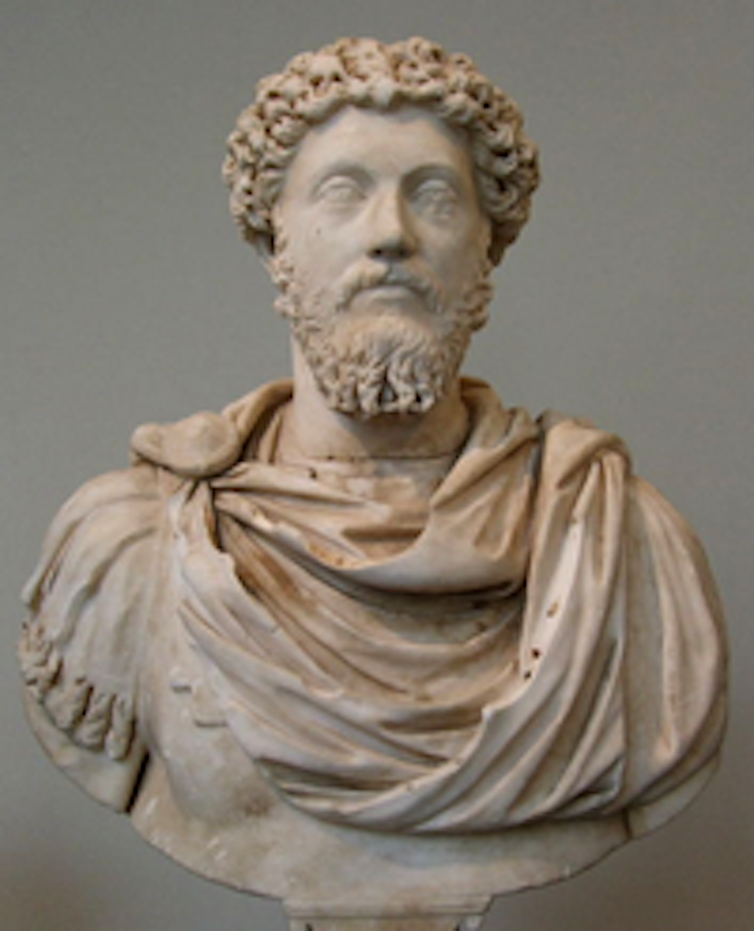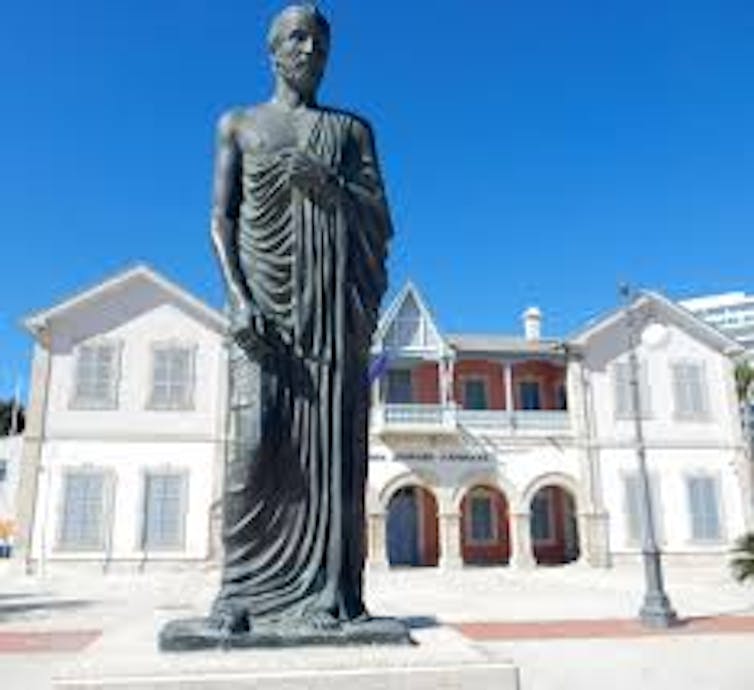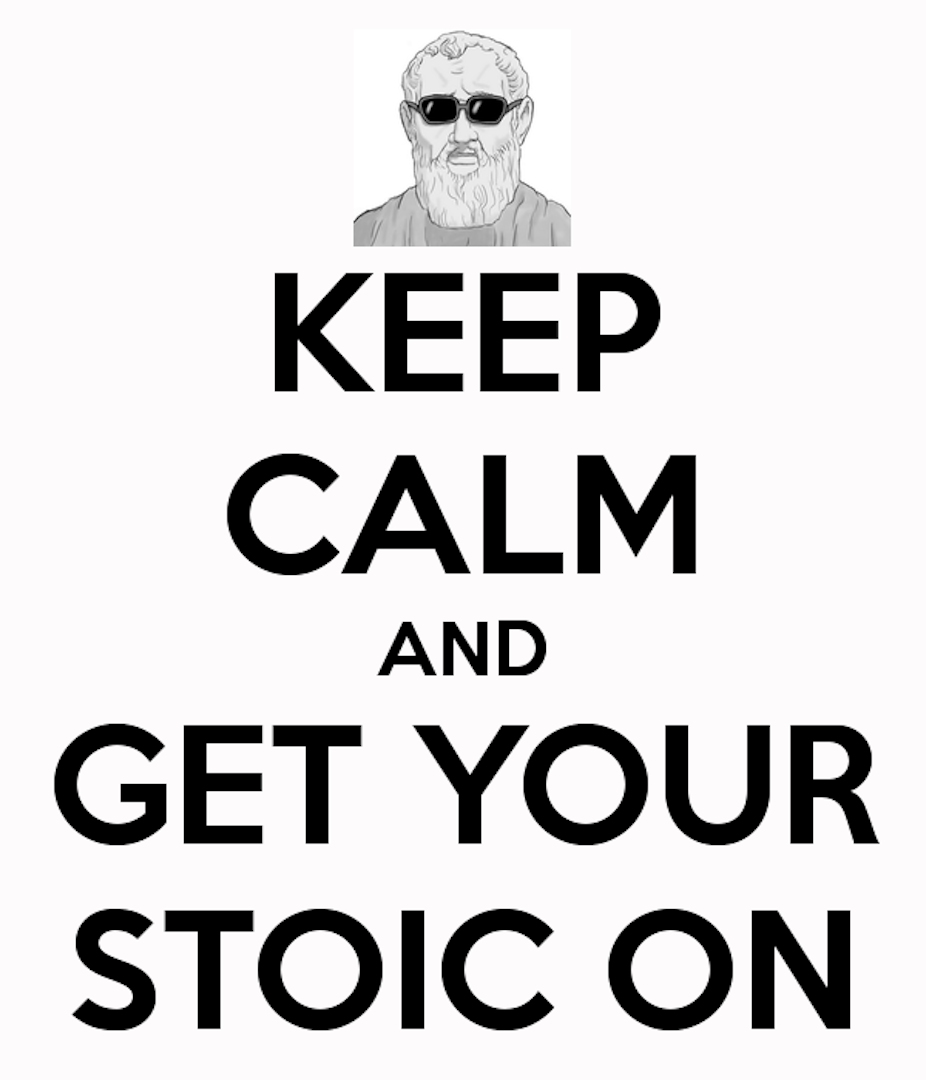From Cynicism to Stoicism
No one expects the Spanish Inquisition, to paraphrase Monty Python.
We live in strange times. But few people could have expected today’s rise of a global movement of self-describing Stoic online communities numbering over 100,000 participants.
Stoicism was the ancient Greek and then Roman philosophy founded in the last decades of the fourth century BCE by a merchant, Zeno of Citium (modern Cyprus). The latter’s vessel had sunk on route to Athens, taking Zeno’s cargo down with it.
Zeno, it is said, made his way up to the Athenian agora. There, with his few remaining coins, he bought and read a copy of Xenophon’s Memorabilia of Socrates. “Where can I find a man like this?”, he is supposed to have asked the bookseller.
Zeno was pointed towards one Crates, a philosopher from the Cynical school. The Cynics were a kind of radical break-away group from the circles surrounding the Platonic Academy and Aristotelian Lyceum. The Cynics claimed to live “according to nature”. They completely shunned social conventions and lived as simply as dogs (kynes), whence the name.
Some years later, Zeno founded his own school. He would deliver lectures to the public on the steps of Athens’ painted Stoa (whence “Stoicism”, aka “the porch”), whose foundations today lie half-concealed beneath surrounding restaurants.

What all this has to do with men and women in the internet age, outside of classics departments, is another thing.
When this author has from time to time spoken on issues around the Stoic conception that philosophy is a “way of life” at academic conferences, the results vary. In some contexts, people respond with barely concealed condescension. Philosophy is about concepts, the pursuit of truth, and these days, the increasingly-uncertain pursuit of competitive advantage in a shrinking marketplace.
“How would you know you were living philosophically?”, someone asked at one such event. “Surely, even if we agree that a form of self-cultivation was what philosophy once was, this is no longer possible today,” others have rejoined.
The Stoic philosophy, some note, involved a highly systematic physics, many of whose propositions do not gel with our presently-best understandings of nature (notably, the idea of a providentially ordered cosmos that is in some sense a single living organism).
I had a strange Cynical impression of my own, when I recently discovered the phenomenal extent of the growth of “Modern Stoicism”, “How to Be a Stoic”, “Daily Stoic”, “Traditional Stoicism”, and associated blogs, email lists and Youtube channels since 2013.
The thousands of people who write, read and practice the Stoicism prescribed by these sites, take courses and attend annual events like Stoicon, I thought, are responding to the academic queries like Diogenes, the most famous Cynic, is said to have responded to a metaphysical argument that purported to show that movement was impossible.
Initiating the long and invaluable tradition of philosophical satire, the old dog got up from his armchair and walked around.
Why Stoicism?
But why Stoicism, and why now? I recently asked these and other questions to several of the leading figures associated with the new Stoic movement, and spent time investigating their sites and stories.
The core of the answer has to be the enduring pertinence of Stoic ethics, especially as it has come down to us through the Roman Stoics Seneca, Epictetus, Musonius Rufus and Marcus Aurelius.
The pertinence hinges upon a few very simple, powerfully intuitive observations and principles.
These begin with Epictetus’ simple call to people to always distinguish between what is, and is not in our control. There is, at some basic level, no rational point in being unhappy about the things we can’t change. Learning to let go of these things, in order to focus on what we can affect—our own present impulses, thoughts, and actions—just has to be both philosophically astute, as well as a psychological boon.
Imagine that all of the mental energy people spend worrying about what others think, tweet, like or say (or don’t) about them, what may happen in the future (but may not), and what cannot be changed in the past, could be freed up to attend solely to the things we each can presently alter.
This thought will bring you close to what the Stoics promise, via their (Socratic) stress that peoples’ inner character (or “virtue”) is the most important good anyone can prize or pursue.

All of the other, external things—from reputation to fame to power to money to … anything subject to the slings and arrows of outrageous fortune—all these are for the Stoics “indifferent”.
That is, they are neither good nor bad in themselves, nor can their possession or loss (as we sometimes say) “make us” happy or unhappy. It is our judgements of things which confers on them this power over us. But those judgements can be challenged by argument, and reframed through practice and resolve.
Stoicism has recently been described, in today’s terms, as one of the best “mind hacks” ever devised.
The resulting, advertised ability of Stoic “sages” to be able to bear up “philosophically”, despite the loss of their cities, properties, friends or even loved ones has given the school the perennial reputation for being a joyless, “grin and bear it” affair.
The Stoics however don’t want or require people to lose everything in order to find inner peace. (This is more the Cynics’ prescription). Stoicism instead asks people to cultivate the inner resources to be able to bear up to prosperity and adversity alike with equanimity.

From the Serenity Prayer to Shakespeare to Roosevelt to modern authors like Walt Whitman or Tom Wolfe, Stoicism has remained one of the abiding threads out of which Western culture has been woven.
And while most of us will find many aspects of the Stoic physics and theology foreign, there seems little in this ethics which has or could ever age. This realisation led the founders of Cognitive Behavioural Therapy to adapt Stoic principles and prescriptions into 20th century psychotherapy, before today’s 21st century revival under Stoicism’s own name.
It is just a good deal harder to be a Stoic in practice, than to Stoicise in theory. And this is where communities of debate and practice come into it.
Why now and how?
One old criticism of the Stoics, from the German philosopher Hegel, is that Stoicism is a philosophy for times of de-democratisation.
It emerged after classical Greece’s autonomous, democratic city-states had undergone terminal decline. The philosophy re-empowers people individually, in a world where everything else is at the disposal of powers, like the Hellenistic Kings and Roman Emperors, who can at any moment rob us of all our worldly possessions.
There are real historical problems with this idea. But perhaps it captures something about the attractions of Stoicism today. We are entering into a period in which the postwar liberal-democratic consensus is straining. Meanwhile, the security and surveillance apparati of modern corporations and nation-states increasingly call into question what privacy could mean in the internet age.
The internet itself is the more material cause underlying today’s proliferation of Stoic practical philosophy, outside of the walls of academe.

What we might call this “fifth Stoa” or “Stoicism 5.0"—counting the early, middle and late ancient periods scholars divide, plus the early modern "neoStoicism” of figures like Justus Lipsius—had humble beginnings.
Nobody’s ship was sunk. But the people associated with these beginnings had no idea how quickly their progeny would grow.
According to Donald Robertson, author of The Philosophy of Cognitive-Behavioral Therapy: Stoic Philosophy as Rational and Cognitive Psychotherapy:
Patrick Ussher, a PhD student at Essex University used it with a group of students who were trying to live for a week following the advice of Galen, Marcus Aurelius’ physician. His professor in the classics department at Essex, Chris Gill, organized for a group of people who had written about these things, including myself, Tim LeBon, and Jules Evans to meet with them and Stoic Week was born. There’s a video of that workshop at Exeter in 2012. That’s exactly how our Modern Stoicism project was born.
This project now includes several Facebook groups (the largest of which has, as of this week, over 25, 000 members), the Stoicism Subreddit (over 54,000 subscribers), email lists within which fierce debates rage on points of theoretical detail: numerous Stoic blogs, some Stoic consultants, and hundreds of Youtube videos.
There is the site “Traditional Stoicism” which has broken away from the other “modern” groups on grounds of an insistence that living according to Stoic ethics requires a commitment to the ancient Stoic physics and theology.
There are the “Modern Stoicism” and “How to be a Stoic” email feeds, on which articles on Stoic figures, texts and subjects—and, in the latter case, a popular Stoic Advice column—are posted every other day.
Some groups recommend Eastern meditative practices of “mindfulness” alongside, or as the corollary, of Stoic practices. Others demur.
Then there is a site like “Daily Stoic” which sends daily Stoic meditation themes to subscribers’ email addresses: whether quotes from the great Hellenistic and Roman Stoics, or from works of literature and philosophy on Stoic themes.
A way of life, not just a theory
All of these online communities are united by the conviction that Stoicism was and remains, at its core, a way of life. Their founding father, in this regard, is the great French classicist and historian of philosophy, Pierre Hadot.
In a series of works written after 1970, based upon an exacting apprenticeship in theology and philology, Hadot became convinced that the only way to make sense of what the ancient Stoics (and Epicureans and Pyrrhonians) wrote was if we suppose that they conceived philosophy as what the Stoics called “an art of living”.

Many of the texts, notably including the Roman Stoics’ at the heart of today’s Stoic revival, feature prescriptions for what Hadot called “spiritual exercises”. These include meditative exercises, wherein a student is for instance encouraged to re-envisage her situation from above, in order to re-contextualise (and bring a larger perspective to) the difficulties they face.
Marcus Aurelius’ Meditations involve a series of fragments wherein the emperor enjoins this and other exercises on himself: like the practice of remembering, with gratitude, all the people who have benefited him, and what he owes to each of them; or premeditating, every morning, how in the day ahead we will confront people who irritate or misconstrue us, and situations that do not “go our way”; or remembering that “the best revenge is not to become like the person who has wronged you”, whose thoughts and actions in any case are primarily their own concern.
Seneca tells us that each night, before sleep, he would make time to examine all of the previous days’ actions in the Stoic light of his philosophical principles.
The answer to how a person would know they are living like a Stoic is then pretty clear, to all but some professionals. Zeno is again on the move.
The Stoic student would be undertaking these and other exercises, every day, at allocated times, in ways recommended for instance in the “Live like a Stoic” week that has been running since 2012. As Robertson explained his own Stoic practice to the author recently:
I study Stoic literature pretty much every day …. [and] I try to live like a Stoic. I take a cold shower every morning; I fast every Sunday; I exercise based on Stoic principles in the mornings. I prepare for setbacks in the morning and review my day before going to sleep … I also use the View from Above if I’m ever feeling stressed. But Stoicism is my ethic, so in a sense I’m trying to apply it throughout the day to every situation.
Of course, not everyone who belongs to the 21st century, Stoic online communities will live out so completely the kind of philosophical regimen Robertson describes here.
But the fact that so many people now belong to these 21st century Stoic communities suggests that, whatever may happen to philosophy in its later modern academic iterations in coming decades, its ancient calling will remain vibrantly alive.

